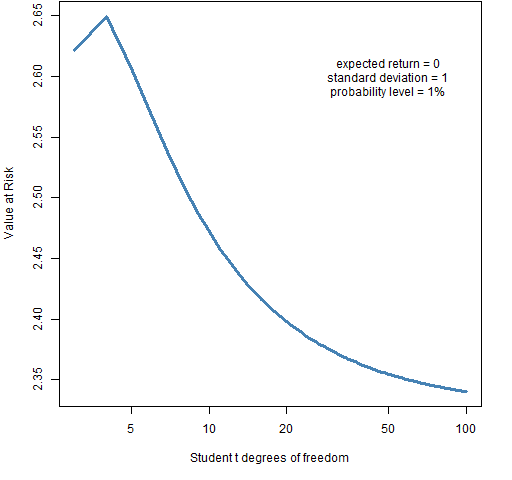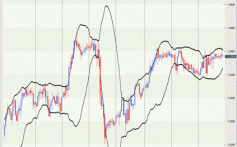Value at Risk (VaR) An Introduction
Post on: 16 Март, 2015 No Comment

Value at Risk and Market Risk
Market risk arises from positions that are mismatched. Even brokers who in theory act as middlemen and should not have market risk will end up holding risky positions during the course of trading and market making. A broker may also put on hedges for mismatched trades. However the hedges may be far from perfect. Consider a swaps broker who hedges a 3 month floating swap with a 6 month floating swap. This will lead to basis risk until the position can be closed out properly when sold to another customer.
Before the advent of measures like Value at risk (VaR). risk control consisted mostly of limits that governed the risks that traders could take onto their books. These limits could be:
- Based on net open positions
- Maturity mismatches in the net open position
- Greek based notional limits – Delta. gamma. vega
- Limits based on sectors. regions. countries etc
A major problem with these type of limits is that they are hard to look at on a global level. It is hard to relate the limits from an equity trading area to an interest rates trading area. Adding them together would be meaningless. All this meant that it was pretty hard for the senior management of a financial institution to get an appreciation of the overall risk of the firm.
The main idea that developed was that a better appreciation of the risk could be had by looking at the probability distribution of potential losses of a portfolio of securities. This led to the development of the concept of Value at Risk (VaR). VaR allowed the management of firms to get a much better grip on the overall risk in a bank and set limits accordingly based on Value at risk (VaR).
Value at risk
There are plenty of criticisms that can be leveled at Value at risk (VaR) models – that they are too model based and unrealistic a representation of actual market dynamics. However it should be recalled that in the absence of Value at risk (VaR) the alternatives are even worse. So a good point to start from when learning about VaR is that while it is far from a perfect model of the risk in portfolios, it is much better than any other alternatives. Another important point to bear in mind is that Value at risk (VaR) is just one of the many tools that should form part of the Risk Managers toolset.
Value at Risk Definition
Value at risk (VaR) – VAR is a summary number that quantifies the worst possible loss of a portfolio at a given confidence interval, usually taken as 99%, over a given time horizon. The two parameters that can be chosen therefore are :
- The confidence interval (usually between 95% and 99%)
- The time horizon (depends on the institution but usually 1 day, with some going out to 5 days or even a month).
Some facts to keep in mind:
- Value at risk (VaR) is based on the parameters that are fed into the model. Decisions about data. length of time series etc. need to be made which will impact the VaR reported. The estimates that Value at risk (VaR) gives will differ depending on these parameters.
- Trading horizon – if this is too long then the assumption of holding the portfolio constant becomes unrealistic.
- Value at risk (VaR) does not tell us anything about the size of the loss on the occasions when the loss is greater than the Value at risk (VaR). This is something that is addressed by concepts such as extreme value theory.
The exact horizon and confidence interval that are chosen will depend on the institution and the type of trading they are doing. They will also be influenced by regulatory requirements. The regulators allow institutions to use their own internal Value at risk (VaR) models in order to calculate their regulatory capital requirements.
Value at risk (VaR) Internal Models for Risk Capital
Banks may use internal Value at risk (VaR) models to calculate their regulatory capital requirements as long as the following conditions are met :
- The model and the risk management infrastructure has to be approved by the Bank supervisor (usually the central bank in that particular country).
- The regulatory capital model is the same as used for day to day risk reporting
- A confidence level of 99%
- A time horizon of 10 business days (averaged over 60 business days).
Note that the conversion from 1 day to 10 day Value at risk (VaR) is done quite simply by multiplying by the square root of time. So for ten days the square root would be 3.16, which means the 10 day Value at risk (VaR) would be 1 day Value at risk (VaR) times 3.16. This rule comes from the assumption that the fluctuations of an examined stochastic process are independent. So when fluctuations are independent volatility increases with the square root of time.














